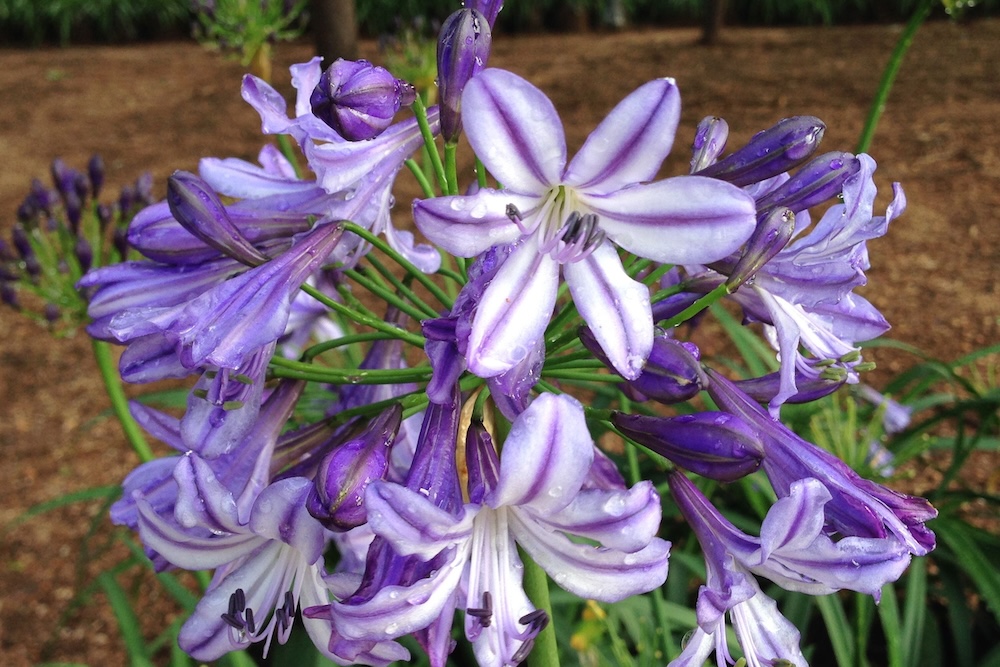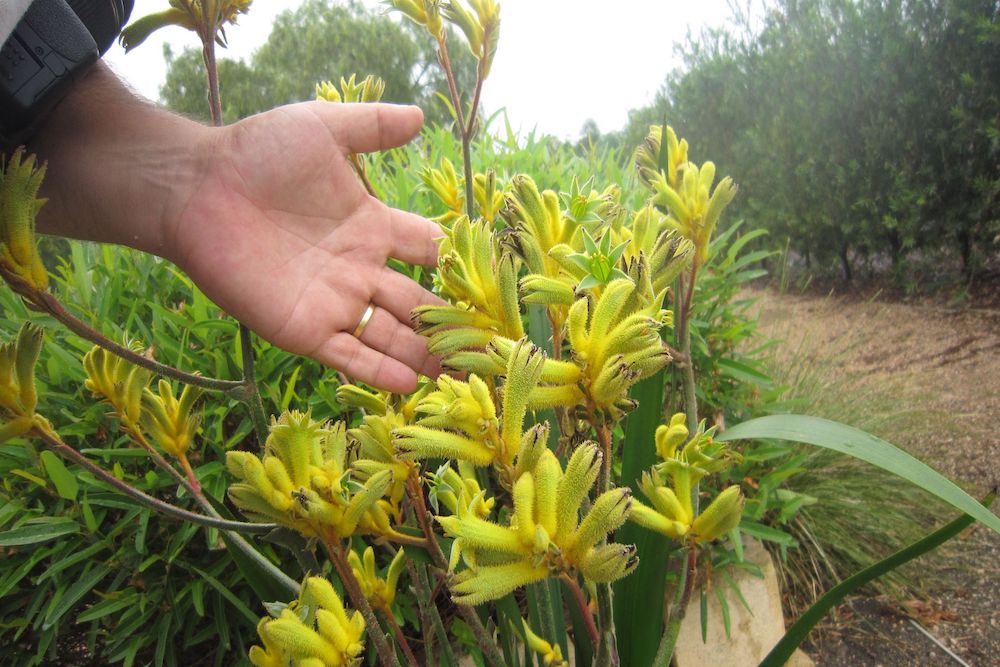In the realm of horticulture, one practice stands out as essential for maintaining the health and vibrancy of your garden: deadheading.
How Tall Does Lilly Pilly Grow: A Detailed Exploration
In the world of Australian flora, few plants spark as much love as the lilly pilly. Hailing from the Syzygium, Acmena and Waterhousea genera, these native plants are known for their versatility and adaptability.
Yet, one question often asked by both seasoned gardeners and professional landscapers alike is, “How tall do lilly pillies grow?”
In this article, we’ll explore this question in-depth, looking at the factors that influence the height of lilly pillies and the differences between species and cultivated varieties.
We’ll also provide insights into how you can manage their growth for optimal landscape design and maintenance.
- Defining Traits of Lilly Pilly
- Deciphering the Height of Lilly Pilly
- Influence of Pruning on Lilly Pilly’s Height
- How to Prune Lilly Pillies to Grow Taller Quickly
- Popular Varieties of Lilly Pilly and Their Typical Heights
- Maintaining Your Lilly Pilly
- Advantages of Introducing Lilly Pilly to Your Garden
- Daniels Wrap
Defining Traits of Lilly Pilly
Lilly pillies are members of the Myrtaceae family, along with eucalypts and callistemons. They have wonderfully fragrant, waxy leaves, and soft, fluffy flowers that attract all types of pollinators including birds and insects.
On top of that, they also have delicious, juicy, edible sweet-tart fruits.
However, not all lilly pillies are the same. There are numerous species and cultivated varieties, each with their own set of traits – including variations in height, leaf colour, and fruit production.

Deciphering the Height of Lilly Pilly
Now, let’s tackle the question at hand – “how tall does a lilly pilly grow?” The answer isn’t straightforward due to the diversity within the different types of lilly pillies, with hundreds of cultivated varieties bred for different types of gardens.
On average, most lilly pilly varieties can reach a height between 3 to 5 metres. Some species of Lilly pilly can reach impressive heights, such as Syzygium smithii and Syzygium luehmannii, which can potentially grow up to 15+ meters tall. Syzygium luehmannii have even been known to grow up to 30m in their natural habitat!
Others are much smaller, such as Syzygium australe ‘Tiny Trev’ which generally only grows up to 1.5m. The height of a lilly pilly isn’t just determined by its species, though. Several environmental factors and care practices play a crucial role in how tall a lilly pilly can grow.
Soil quality is a significant factor. Lilly pillies thrive in well-draining soil, rich in organic matter. Providing your lilly pilly with nutrient-rich soil can enhance its growth potential, leading to taller plants.
They also need access to a decent volume of soil so that their roots can reach their full potential; if you’re planting in a container or you’ve got a hard layer of rock beneath the topsoil, your lilly pilly will never reach its true potential.
Sunlight exposure also influences the height of lilly pillies. These plants love the sun, and those planted in full sun tend to grow taller than those in partial shade.
Watering practices are equally important. While lilly pillies are drought-tolerant once established, regular watering during their growth phase encourages healthy development and can contribute to achieving maximum height.
Under ideal conditions, a lilly pilly can take between 5 to 15 years to reach its maximum height. As for the growth rate per year, lilly pillies are known for their fast-growing nature. You can expect a lilly pilly to grow approximately 0.5 to 1 metre per year until they reach maturity, depending on the species and care practices.
Influence of Pruning on Lilly Pilly’s Height
If you’re asking “how tall do lilly pillies grow,” you might be concerned that your plants will grow too tall for the space.
Regular pruning is how to control the height of your lilly pilly. Pruning not only helps maintain a manageable size, especially in smaller gardens or landscapes where space is a premium, but it also promotes denser growth, making your lilly pilly bushier and more robust.
Hedge pruning a lilly pilly by making non-selective cuts at any point along the branch (including tip pruning) is the best way to get a thicker, bushier plant.
How to Prune Lilly Pillies to Grow Taller Quickly
If you’re aiming to enhance the height of your lilly pilly without encouraging excessive bushiness, strategic pruning techniques can be your greatest ally. These methods focus on promoting vertical growth while curbing lateral branching. Let’s delve into the steps to accomplish this:
Right Plant, Right Place: If you haven’t put the right plant in the right place, it’ll struggle all its life. Make sure you’ve got the right conditions to facilitate the growth you’re hoping for.
Formative Pruning: Start the desired shape while the plant’s young. Training a central leading branch from early in the plant’s life sets it up to become as tall as possible.
Selective Pruning: The key is to be selective in your pruning. Prune branches to a fork no less than one third of the thickness of the branch you’re cutting, to avoid energy being spent on thickening up like a hedge. On top of that, remove no more than one-third of your lilly pilly’s foliage in a single year, unless you’re pruning for a hedge shape.
Elevate the Canopy: Pruning lower branches, especially those close to the ground or growing horizontally, can stimulate vertical growth. By elevating the canopy, you’re encouraging your lilly pilly to grow taller.
Preserve the Central Leader: A strong and dominant central leader is essential for vertical growth. This main stem at the top of the tree guides its upward direction. Ensure it remains dominant by selectively pruning any competing stems or branches, and avoid pruning the tip of that central leading branch. Once it gets to the desired height, you can start tip pruning it to make it bushier.
Consistent Monitoring: Keep a close eye on your tree’s growth and adjust your pruning strategy as needed. If you notice any lateral branches growing too vigorously, prune them back before they start competing with the leading branch.
Consistency is Key: Regular, light pruning tends to be more effective than infrequent, heavy-handed cuts. This approach allows you to guide the tree’s growth gradually, without causing undue stress.
Water and Nutrition: Supporting vertical growth also involves providing your lilly pilly with adequate water and nutrients. Ensuring these essentials can help your lilly pilly achieve its maximum potential height.
Bear in mind that different lilly pilly species may respond differently to pruning, and results can vary based on environmental conditions. Patience is paramount — significant changes in height take time. For tailored advice based on your specific lilly pilly variety and local growing conditions, consult with a qualified horticulturist or arborist in your area.

Popular Varieties of Lilly Pilly and Their Typical Heights
When it comes to the question “how tall do lilly pillies grow”, the answer varies based on the specific species. Here are some well-known lilly pilly varieties and their usual heights:
- Syzygium luehmannii, also known as riberry, this lilly pilly can grow up to 30 metres under optimal conditions, but usually stays around 8 to 10 metres in the average garden setting.
- Syzygium paniculatum or magenta cherry, tends to reach between 3 to 5 metres.
- Syzygium australe, commonly known as brush cherry, typically reaches a height of 5 to 8 metres.
- Straight and Narrow™ Syzygium australe ‘SAN01’ PBR is a fast-growing variant of S. australe that naturally grows tall, straight, and narrow. Bred by Ozbreed, it’s semi-compact and dense, making it ideal for screening or hedging in tight planting areas. It’s also psyllid-resistant and can reach heights up to 10 metres.
- Sublime™ Acmena smithii ‘DOW30’ PBR thrives in full sun to part shade, making it a versatile choice for various garden locations. It can grow up to 5 metres tall when used as a screen, or be pruned to maintain a lower height when shaped into a hedge.
- Waterhousea floribunda, also known as Weeping Lilly Pilly, is a medium to large evergreen tree native to the rainforests of Eastern Australia. It typically grows to a height of 10 metres but can reach up to 20 metres under optimal conditions.
- Sweeper® Waterhousea floribunda ‘DOW20’ PBR is another cultivar from Ozbreed notable for its heavily weeping habit and denser form. It’s highly resistant to Myrtle Rust and can reach heights up to 15 metres, making it a stunning feature in any garden or landscape.
Maintaining Your Lilly Pilly
Cultivating a lilly pilly is a rewarding endeavour, thanks to their fast growth, lush foliage, and adaptability. These plants thrive in well-drained soil that’s rich in organic matter. They prefer full sun but can tolerate partial shade, making them versatile for various garden locations.
Watering is crucial during the early growth phase of your lilly pilly. While they’re drought-tolerant once established, regular watering encourages healthy development. As for feeding, a slow-release fertiliser applied in spring and summer will keep your lilly pilly in peak condition.
Opt for an organic-based fertiliser like compost or composted manure to improve the soil quality and feed the micro-organisms that help keep your lilly pilly in good health.
Don’t worry about using regular fertilisers on lilly pillies, because they aren’t one of the native Australian plants that require low phosphorous. Like other members of the Myrtaceae family like callistemons, you can use an all-purpose fertiliser without stressing them. Provided you don’t overdo it, of course.
Despite their hardiness, lilly pillies can be susceptible to certain issues. Psyllids are tiny insects that cause unsightly bumps on leaves, but selecting a psyllid-resistant variety like Sublime™ Acmena smithii ‘DOW30’ PBR can help avoid this problem.
Like many native dicots, they’re also at-risk of myrtle rust, a horrific fungal pathogen that can devastate your garden. If you find unexplained brown or grey spots on your leaves, perhaps with a red-purple halo around them, consult a qualified horticulturist for help earlier rather than later.
Advantages of Introducing Lilly Pilly to Your Garden
Lilly pillies offer a wealth of benefits for both home gardeners and professional landscape experts. Their fast growth and attractive foliage make them an excellent choice for hedging and topiary.
They add immediate visual appeal with their glossy leaves and vibrant berries, and their dense growth provides privacy and noise reduction.
For landscape professionals, lilly pillies offer versatility. Their varied growth heights mean there’s a variety suitable for almost any project, from tall feature trees to medium-height hedges.
Plus, their resilience and low maintenance needs make them a practical choice for public spaces or large-scale landscapes.
Daniels Wrap
In exploring the question “how tall do lilly pillies grow”, we’ve delved into the diverse world of lilly pilly varieties and their growing conditions. From understanding their typical heights to learning about the care practices that influence their growth, it’s clear that these Australian natives are as versatile as they are beautiful.
Whether you’re seeking the towering stature of a weeping Waterhousea floribunda, the slender growth of a Pinnacle™ lilly pilly, or the compact Sublime™ lilly pilly, there’s a variety to suit the available space in your garden or landscape.
And with their fast growth rate and stunning aesthetic appeal, they’re a rewarding addition to any environment. Why not consider introducing a lilly pilly to your green space today?




This Post Has 0 Comments